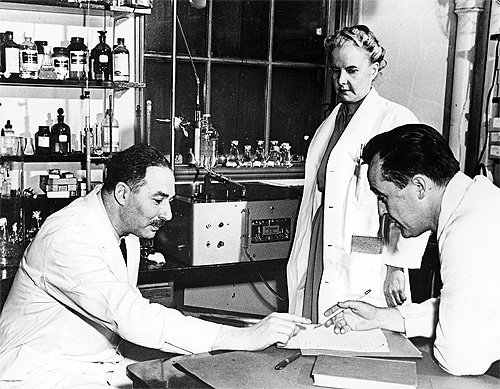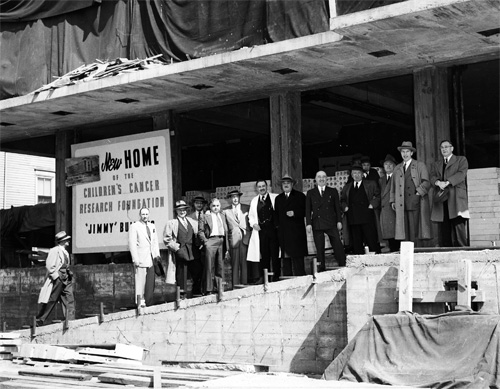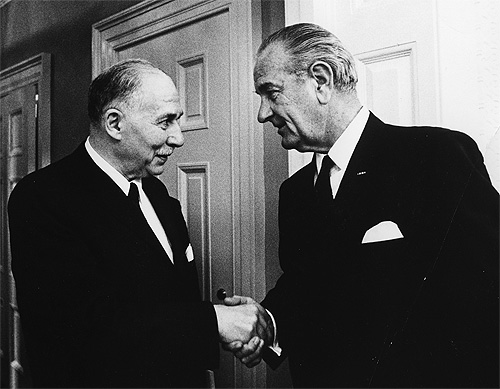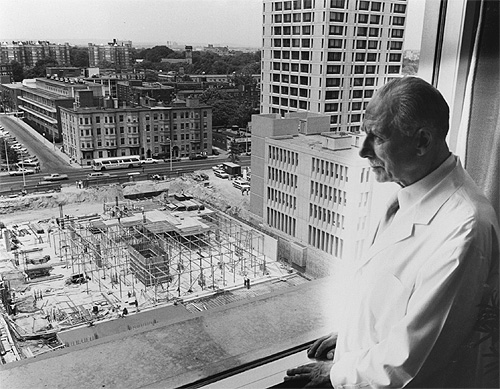This Thanksgiving, as we continue to look for better ways to care for our patients today, and in the future, we also look back and give thanks to the foresight of our founder, Sidney Farber, MD.


Working in this basement laboratory at Boston Children’s Hospital during the 1940s, Dr. Farber sought the treatment that could thwart childhood leukemia – a disease that was almost universally fatal. Within a few years, he would help dramatically change those numbers.

Dr. Farber (center, in white lab coat) was so successful in treating pediatric cancer patients that in 1952 he secured funding to move from his one-room lab into a four-story, state-of-the-art cancer center where research and therapy all took place under one roof.

As more children with cancer recovered, Dr. Farber and his colleagues sought ways to lengthen pediatric survivorship and help children – and adult survivors – with the side-effects and long-term complications of their cancer.

During his later years, Dr. Farber was a frequent visitor to Washington, D.C., where he lobbied for addition national research funding from presidents including Lyndon Johnson (pictured) and Richard Nixon.

Although he did not live to see the end of cancer, Dr. Farber – here watching construction of the Charles A. Dana Building shortly before his 1973 death – left his center in robust shape to continue helping both children and adults battling the disease.

I unfortunately missed the PBS series of programs, but was so happy to be able to read about Dr. Farber and his work here. As amazing as all of today’s technology is and how promising it is, it is just as amazing what doctors such as Dr. Farber researched and developed in their times when technology was so limited compared to today. They were truly pioneers, without which we wouldn’t be where we are today in the field of cancer.